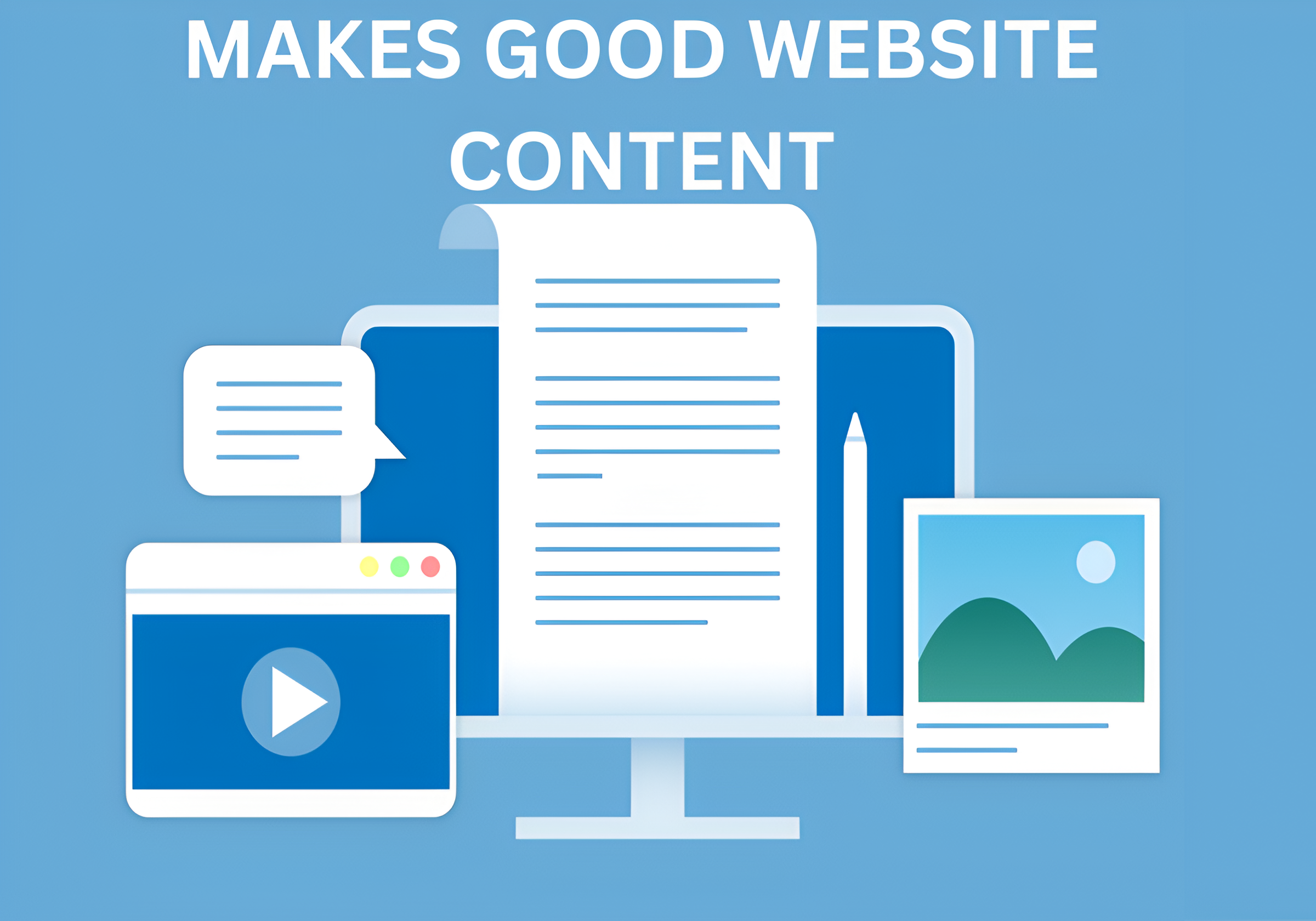Website content is the backbone of any successful online presence. Whether you’re running a business, blog, or e-commerce store, effective website content plays a crucial role in driving traffic, boosting engagement, and converting visitors into loyal customers. Crafting quality content that resonates with your target audience is no easy task. It involves SEO content strategies, content management systems, and continuously updating your website to ensure relevance. This blog dives deep into “what is website content management,” “what makes good website content,” and how SEO content websites are optimized to rank higher and provide a better user experience.
What Makes Good Website Content?
Creating good website content involves more than just SEO keywords. It’s about crafting content that offers value, engages your audience, and builds trust. A content based website is designed with the purpose of providing useful, informative, and relevant content to the users. Whether it’s through blogs, videos, infographics, or interactive elements, the focus is on delivering high-quality content that addresses the needs of the target audience. This type of website ensures that every piece of content serves a purpose, offering solutions, answering questions, or guiding visitors through a customer journey. A content-based website not only enhances user experience but also improves search engine rankings by offering content that is rich, relevant, and informative. By consistently providing fresh and engaging content, a content-based website can establish authority in its niche, build trust with its audience, and encourage repeat visits, all of which contribute to long-term.

1. Relevance to Audience
Good website content must be relevant to your target audience. The content should address the audience’s pain points, needs, and desires. Whether you’re writing product descriptions, blog posts, or service pages, it’s important to understand who your audience is and what they’re looking for.
2. Clear, Concise, and Engaging
Content that is easy to read and understand is critical. Use simple language, break down complex ideas, and avoid jargon unless your audience is familiar with it. Incorporate bullet points, short paragraphs, and well-organized headers to keep the content easy to scan. Keep it concise and to the point.
3. Valuable and Informative
High-quality content provides value. It answers questions, solves problems, and delivers information that helps your audience make informed decisions. Whether it’s providing helpful guides, tips, or insights, make sure your website content offers real value to your readers.
4. Optimized for SEO
SEO is a crucial aspect of what makes good website content. Incorporate your target keywords naturally throughout your content, without keyword stuffing. Use a strategic approach to metadata, images, and internal links. SEO-optimized content will help your website rank higher in search engines, leading to more visibility and traffic.
5. Authenticity and Trustworthiness
Your content should reflect your brand’s voice and values. Authentic, trustworthy content builds credibility with your audience, making them more likely to trust your business. Always ensure that your content is factual, well-researched, and error-free.
Why SEO Content Websites Thrive?
SEO content websites perform better because they attract organic traffic by ranking higher on search engines. The integration of focus keywords like “website content” and “SEO content websites” can significantly boost your site’s visibility. Here are a few proven SEO tips for websites:
- Keyword Research: Identify and target keywords that your audience is searching for.
- Content Structure: Use headings (H1, H2, H3) with focus on keywords to improve readability and search engine ranking.
- Meta Descriptions: Write compelling meta descriptions that include focus keywords.
- Internal and External Links: Link to relevant internal pages and credible external sources.
- Mobile Optimization: Ensure your website is mobile-friendly, as search engines prioritize mobile usability.
What is Website Content Management?
Website content management, often referred to as content management systems (CMS), refers to the process of creating, managing, and organizing content on a website, including website page content. Content management systems are tools that allow users to create, edit, and publish content without requiring advanced technical knowledge. A well-structured CMS ensures that website content is easily accessible, updated regularly, and optimized for both users and search engines.
Effective content management means ensuring that every page, blog post, image, video, and product description is organized in a way that contributes to a seamless user experience. This includes having well-optimized URLs, meta descriptions, and a clear content hierarchy to guide users through your website. Tools like WordPress, Joomla, and Drupal are popular CMS platforms used to manage website content efficiently.

Key aspects of effective website content management include:
- Content Planning: Develop a content calendar to ensure consistent updates.
- Version Control: Keep track of content changes and updates.
- Analytics: Use tools like Google Analytics to measure content performance.
- User Accessibility: Ensure your site is accessible to a diverse audience, including individuals with disabilities.
- Security: Protect your content and site from cyber threats.
Tips for Crafting Quality SEO Content Websites
SEO content websites are designed to ensure that all elements of the site work together to increase organic traffic. These websites are optimized with on-page SEO techniques such as keyword-rich content, internal linking, and metadata. The goal is to rank higher in search engine results pages (SERPs), making it easier for users to find your content.
SEO content websites focus on creating high-quality content that aligns with user intent. By answering the questions your audience is asking, you increase the likelihood of ranking well for relevant queries. As search engines evolve, user experience (UX) plays a more significant role in rankings. Content that’s optimized for SEO and provides value to users leads to better engagement metrics, including longer time on page and lower bounce rates.
1. Understand Your Audience
Conduct audience research to understand their preferences, pain points, and search behavior. This insight helps tailor your content to their needs.
2. Create Engaging Headlines
Headlines are the first thing users notice. Use power words and include focus keywords to make them compelling. For instance, “Proven SEO Tips for Boosting Website Content” is more engaging than “SEO Tips.”
3. Structure Your Content
Break down content into sections using subheadings with focus keywords. This improves readability and SEO performance.
4. Use Visuals and Media
Enhance your content with images, videos, and infographics. These elements break monotony and improve audience engagement.
5. Optimize for SEO
Include focus keywords naturally within the text.
Add alt text to images for better accessibility and SEO.
Maintain keyword density around 1% to avoid keyword stuffing.
6. Provide Value
Your content should educate, entertain, or solve problems for your audience. For example, a blog on “what makes good website content” could include actionable tips and examples.
7. Include CTAs
Encourage readers to take action, such as subscribing to a newsletter, sharing the post, or making a purchase.
Frequently Asked Questions
1. What Is Good Content for a Website?
A. Good content is informative, engaging, and optimized for search engines. It addresses the audience’s needs and motivates them to take desired actions.
2. What Is a Website Content Example?
A. A product description that highlights features, benefits, and uses while incorporating SEO elements is a great example of website content. Blog posts, landing pages, and “About Us” sections are other examples.
3. How to Write Website Content?
A. To write website content:
- Define your target audience and goals.
- Research relevant keywords.
- Create an outline and structure the content.
- Write clearly and concisely.
- Optimize for SEO.
4. What is the Main Content of a Website?
A. The main content of a website includes the homepage, product or service pages, blog posts, and any other information directly addressing user needs and promoting the site’s purpose.
Mastering SEO, Management, and Content Creation for Business Success
In conclusion, website content is not just about filling pages with words; it’s about crafting meaningful, SEO-optimized content that resonates with your audience and provides value. Effective content management, combined with SEO best practices, ensures that your website ranks higher and attracts the right audience. At adwebcraft, we understand the power of high-quality, well-optimized website content. Our team is dedicated to helping businesses create compelling content that drives results. Whether you require help with content creation, SEO optimization, or content management systems, adwebcraft is here to provide expert solutions for your online success.


